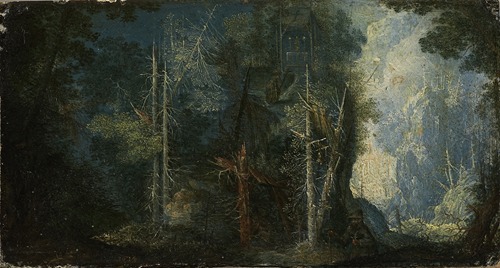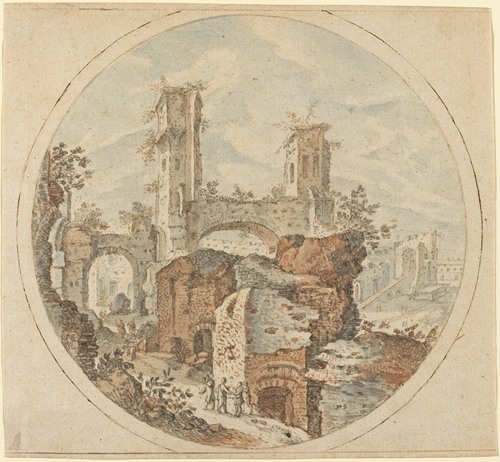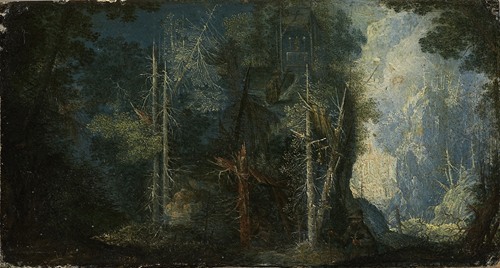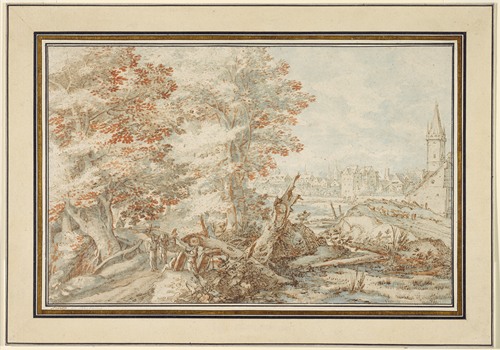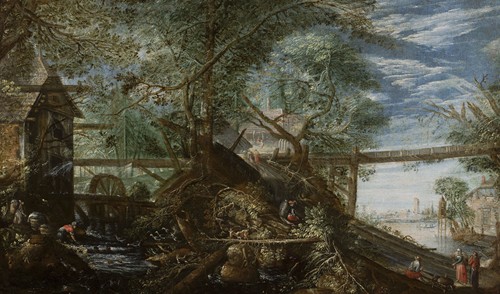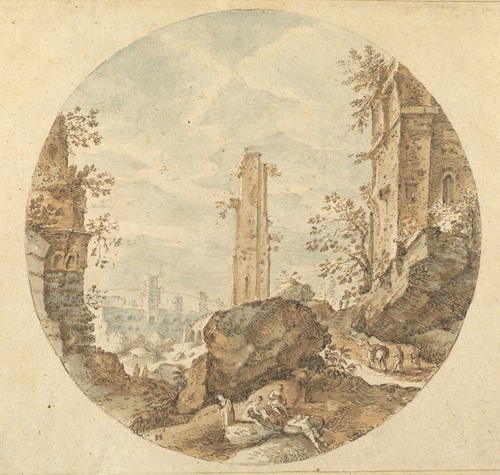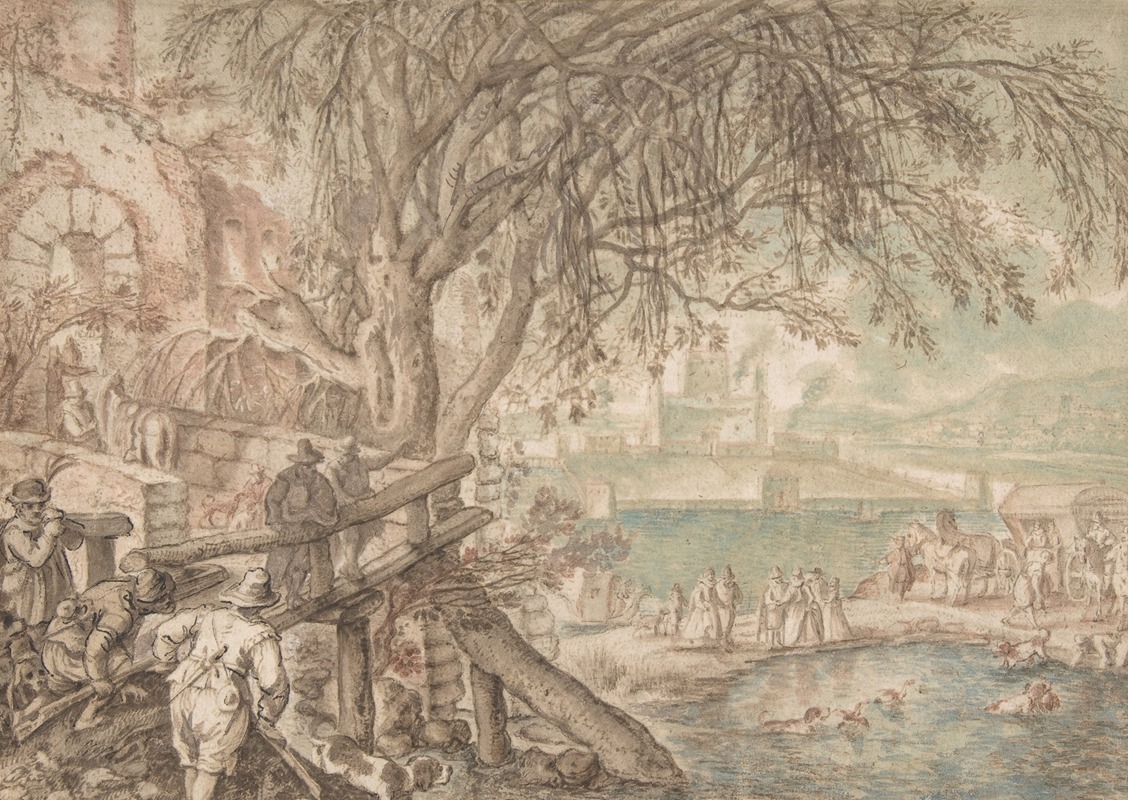
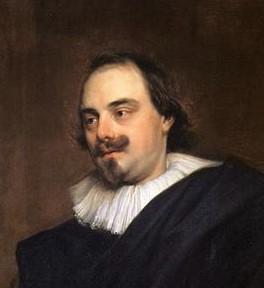
Landscape painter and draftsman Pieter Stevens may have trained in Antwerp, for he was a free master there in 1589. Early drawings depicting ancient monuments in Rome and Naples were probably copies of works by Jan Brueghel the Elder, rather than proof that Stevens went to Italy. In 1594 Stevens was appointed court painter to Emperor Rudolf II in Prague, where he may have known Roelandt Savery.
There he specialized in depicting peasant festivals and mountain scenes. The court workshop reproduced Stevens's landscape designs in pietra dura for furniture decoration. Engravings also disseminated the designs.In Prague, Stevens's interest in light and atmospheric effects expanded these themes, which later became popular in Dutch art of the 1600s. He also developed landscape as an independent genre, without figures or animals.
His coloristic tendencies were clearest in his drawings, when he changed his media from pen and dark ink against deep blue washes to brush and soft tones. He may have been influenced by Jan Brueghel the Elder's 1604 visit to Prague, for Brueghel used a similar wash technique. After Rudolf's death, Stevens may have worked for Prince Charles of Liechtenstein, Stadtholder of Bohemia, from at least 1620 to 1624. His son and grandsons were also painters in Prague.
